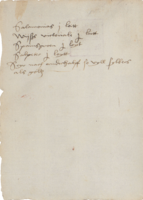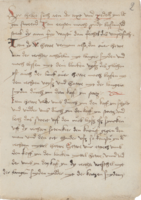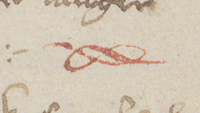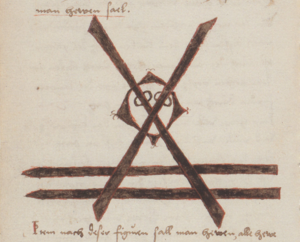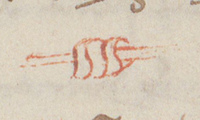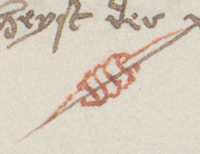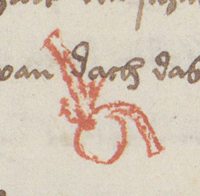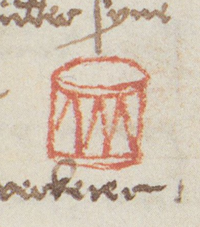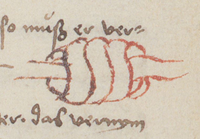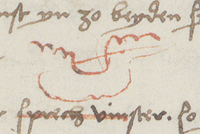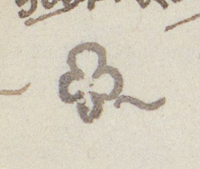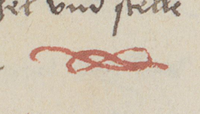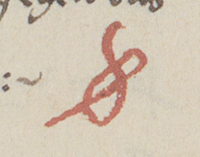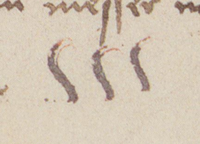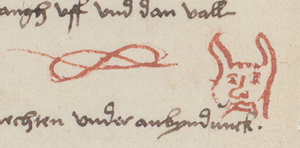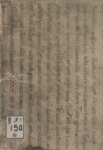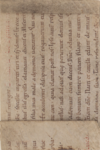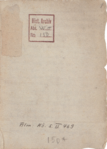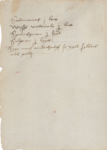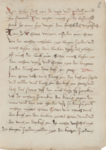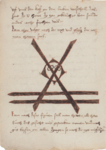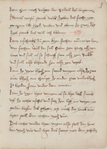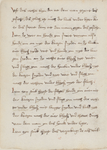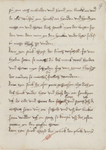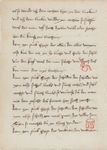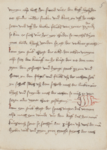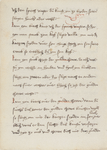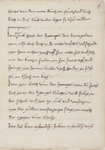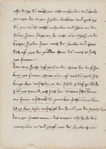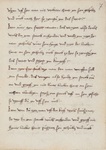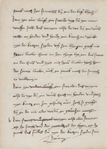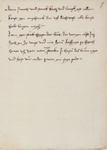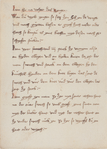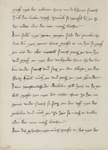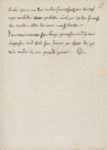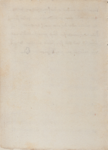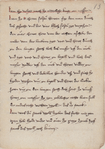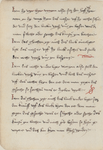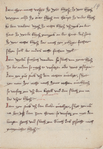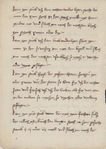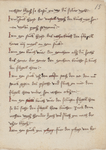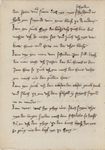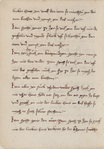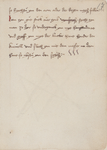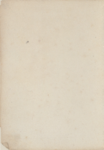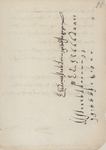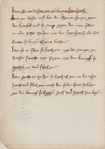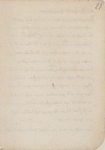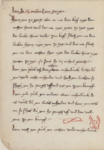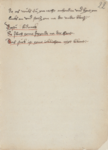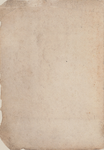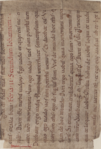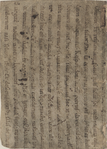|
|
You are not currently logged in. Are you accessing the unsecure (http) portal? Click here to switch to the secure portal. |
Difference between revisions of "Kölner Fechtregeln (MS Best.7020 (W*)150)"
| Line 102: | Line 102: | ||
|- | |- | ||
| − | | | + | | [[file:MS Best.7020 W-150 detail 01.png|200px|center]] |
| <p>Item. Understand the .5. hews as so: The over-hew from the right shoulder with the long edge and make [a] positioning with your left foot. Also similarly, the left over-hew make position with the right foot and hew with the long edge plunging through your opponent’s head, etc.</p> | | <p>Item. Understand the .5. hews as so: The over-hew from the right shoulder with the long edge and make [a] positioning with your left foot. Also similarly, the left over-hew make position with the right foot and hew with the long edge plunging through your opponent’s head, etc.</p> | ||
| {{section|Page:MS Best.7020 W-150 02r.png|2|lbl=-}} | | {{section|Page:MS Best.7020 W-150 02r.png|2|lbl=-}} | ||
| Line 113: | Line 113: | ||
|- | |- | ||
| − | + | | [[file:MS Best.7020 W-150 detail 02.png|300px|center]] | |
| <p>'''Item. The text and gloss follows hereafter [on how] one shall hew.'''</p> | | <p>'''Item. The text and gloss follows hereafter [on how] one shall hew.'''</p> | ||
| Line 120: | Line 120: | ||
|- | |- | ||
| + | | [[file:MS Best.7020 W-150 detail 03.png|200px|center]] | ||
| <p>Item. The recital of the longsword follows hereafter.</p> | | <p>Item. The recital of the longsword follows hereafter.</p> | ||
| Line 126: | Line 127: | ||
|- | |- | ||
| + | | | ||
| <p>''Item. If you frighten easily,<br/>Do not learn any fencing.''</p> | | <p>''Item. If you frighten easily,<br/>Do not learn any fencing.''</p> | ||
| Line 132: | Line 134: | ||
|- | |- | ||
| + | | | ||
| <p>Item. Understand the four openings in the sword thusly: The two over-openings on the head, the other two under-openings to both sides below the arms.</p> | | <p>Item. Understand the four openings in the sword thusly: The two over-openings on the head, the other two under-openings to both sides below the arms.</p> | ||
| {{section|Page:MS Best.7020 W-150 03r.png|3|lbl=-}} | | {{section|Page:MS Best.7020 W-150 03r.png|3|lbl=-}} | ||
| Line 173: | Line 176: | ||
|- | |- | ||
| − | | | + | | [[file:MS Best.7020 W-150 detail 04.png|200px|center]] |
| <p>Item. One play is called the plow. Understand the plow thusly: Wind out from the right lier into the left and from the left again into the right, so that you see what the opponent wishes to deploy upon you or if he thrusts, you can break him.</p> | | <p>Item. One play is called the plow. Understand the plow thusly: Wind out from the right lier into the left and from the left again into the right, so that you see what the opponent wishes to deploy upon you or if he thrusts, you can break him.</p> | ||
| | | | ||
| Line 179: | Line 182: | ||
|- | |- | ||
| − | | | + | | [[file:MS Best.7020 W-150 detail 05.png|200px|center]] |
| <p>Item. One play called the fool. Understand the fool thusly: Turn the point in the air and hold the shield<ref>alt: squint. Schilt is used as squint elsewhere in this document.</ref> before the head. Whatever the opponent strikes from-the-day,<ref>vom tag</ref> one can break with it.</p> | | <p>Item. One play called the fool. Understand the fool thusly: Turn the point in the air and hold the shield<ref>alt: squint. Schilt is used as squint elsewhere in this document.</ref> before the head. Whatever the opponent strikes from-the-day,<ref>vom tag</ref> one can break with it.</p> | ||
| {{section|Page:MS Best.7020 W-150 04v.png|2|lbl=-}} | | {{section|Page:MS Best.7020 W-150 04v.png|2|lbl=-}} | ||
| Line 189: | Line 192: | ||
|- | |- | ||
| − | | | + | | [[file:MS Best.7020 W-150 detail 06.png|200px|center]] |
| <p>Item. One play called the clanger. Understand the clanger thusly: Clang once, twice, thrice upon his edge so that you may find him open.</p> | | <p>Item. One play called the clanger. Understand the clanger thusly: Clang once, twice, thrice upon his edge so that you may find him open.</p> | ||
| {{section|Page:MS Best.7020 W-150 04v.png|4|lbl=-}} | | {{section|Page:MS Best.7020 W-150 04v.png|4|lbl=-}} | ||
| Line 200: | Line 203: | ||
|- | |- | ||
| − | | | + | | [[file:MS Best.7020 W-150 detail 07.png|200px|center]] |
| <p>Item. One play called the ox.<ref>alt: armpit</ref> Understand the oxen thusly: Set the pommel upon the chest, the point against the opponent’s face and press<ref>alt: penetrate</ref> strongly into him and hew in the winger and quickly from the right side in the squint. Slash from the squint to the left over-opening and disappear<ref>alt: retreat, recede, vanish</ref> to the right, so that he must displace or become struck hard, etc.</p> | | <p>Item. One play called the ox.<ref>alt: armpit</ref> Understand the oxen thusly: Set the pommel upon the chest, the point against the opponent’s face and press<ref>alt: penetrate</ref> strongly into him and hew in the winger and quickly from the right side in the squint. Slash from the squint to the left over-opening and disappear<ref>alt: retreat, recede, vanish</ref> to the right, so that he must displace or become struck hard, etc.</p> | ||
| {{section|Page:MS Best.7020 W-150 05r.png|2|lbl=-}} | | {{section|Page:MS Best.7020 W-150 05r.png|2|lbl=-}} | ||
|- | |- | ||
| − | | | + | | [[file:MS Best.7020 W-150 detail 08.png|200px|center]] |
| <p>Item. One play called the speaking window. Understand the speaking window thusly: Make a wind in front of the head, such that your arms are crosswise, so there-between you discern whatever the opponent wishes to deploy and deliver quite great sweeps thereafter. From the speaking window you can strike him to both sides, left or right, etc.</p> | | <p>Item. One play called the speaking window. Understand the speaking window thusly: Make a wind in front of the head, such that your arms are crosswise, so there-between you discern whatever the opponent wishes to deploy and deliver quite great sweeps thereafter. From the speaking window you can strike him to both sides, left or right, etc.</p> | ||
| | | | ||
| Line 364: | Line 367: | ||
|- | |- | ||
| − | | | + | | [[file:MS Best.7020 W-150 detail 09.png|200px|center]] |
| <p>Item: Whoever can make his art measured and it unforgotten [to himself] and holds his sword up high, they are good against four others in conflict, etc.</p> | | <p>Item: Whoever can make his art measured and it unforgotten [to himself] and holds his sword up high, they are good against four others in conflict, etc.</p> | ||
| {{section|Page:MS Best.7020 W-150 12r.png|2|lbl=-}} | | {{section|Page:MS Best.7020 W-150 12r.png|2|lbl=-}} | ||
| Line 408: | Line 411: | ||
|- | |- | ||
| − | | | + | | [[file:MS Best.7020 W-150 detail 10.png|200px|center]] |
| <p>Item. The left over-lier is also the same. Lay the messer upon the left shoulder and place the right foot forward in position, etc.</p> | | <p>Item. The left over-lier is also the same. Lay the messer upon the left shoulder and place the right foot forward in position, etc.</p> | ||
| {{section|Page:MS Best.7020 W-150 13v.png|2|lbl=-}} | | {{section|Page:MS Best.7020 W-150 13v.png|2|lbl=-}} | ||
|- | |- | ||
| − | | | + | | [[file:MS Best.7020 W-150 detail 11.png|200px|center]] |
| <p>Item. Understand the right under-lier thusly: Place the left foot forward in position and lay the messer upon you right leg, the point against the face of the man, so that you see whatever he will deploy, etc.</p> | | <p>Item. Understand the right under-lier thusly: Place the left foot forward in position and lay the messer upon you right leg, the point against the face of the man, so that you see whatever he will deploy, etc.</p> | ||
| {{section|Page:MS Best.7020 W-150 13v.png|3|lbl=-}} | | {{section|Page:MS Best.7020 W-150 13v.png|3|lbl=-}} | ||
| Line 577: | Line 580: | ||
|- | |- | ||
| − | | | + | | [[file:MS Best.7020 W-150 detail 12.png|200px|center]] |
| <p>Item: A good play for a throwing-spear.<ref>a small spear often on a cord, thrown from a free hand</ref> If an opponent stabs at you, then go beneath him with a hanging point and grab him with the left hand behind the ball of cord and strike at his hand with the messer so that you take the spear, etc.</p> | | <p>Item: A good play for a throwing-spear.<ref>a small spear often on a cord, thrown from a free hand</ref> If an opponent stabs at you, then go beneath him with a hanging point and grab him with the left hand behind the ball of cord and strike at his hand with the messer so that you take the spear, etc.</p> | ||
| {{section|Page:MS Best.7020 W-150 17r.png|2|lbl=-}} | | {{section|Page:MS Best.7020 W-150 17r.png|2|lbl=-}} | ||
| Line 661: | Line 664: | ||
|- | |- | ||
| − | | | + | | [[file:MS Best.7020 W-150 detail 13.png|300px|center]] |
| <p>Item: A good play of the other upper binding-on. Act as if you will bind-on him to the left and bind-on him to the right so that you strike his staff up and then fall into the battle.</p> | | <p>Item: A good play of the other upper binding-on. Act as if you will bind-on him to the left and bind-on him to the right so that you strike his staff up and then fall into the battle.</p> | ||
| {{section|Page:MS Best.7020 W-150 21v.png|3|lbl=-}} | | {{section|Page:MS Best.7020 W-150 21v.png|3|lbl=-}} | ||
Revision as of 03:43, 19 June 2020
| Fechtregeln | |||||
|---|---|---|---|---|---|
| MS Best.7020 (W*)150, Historisches Archiv Cologne, Germany | |||||
| |||||
| |||||
| Type | |||||
| Date | ca. 1500 | ||||
| Language(s) | Early New High German (Ripuarian) | ||||
| Author(s) | Unknown | ||||
| Size | 22 folia (145 mm x 100 mm) | ||||
| Format | Double-sided | ||||
| External data | Handschriftencensus | ||||
| Treatise scans | Microfilm scans | ||||
| Other translations | Traduction française | ||||
Fechtregeln ("Fencing Rules"; MS Bestand 7020 (W*)150) is an anonymous German fencing manual created around the turn of the 16th century.[1] It currently rests in the holdings of the Historisches Archiv der Stadt Köln in Cologne, Germany; it was housed in the wing of the Archive that collapsed on 3 March 2009,[2] but it was recovered and seems to have been unharmed.
Fechtregeln, also sometimes called the "Kölner Fechtbuch" (Fencing Manual of Cologne), contains several verses resembling Johannes Liechtenauer's Recital, but it has few other obvious parallels to the teachings of the high master.[1] However, as James Wallhausen points out, it does bear a certain resemblance to the syllabus of the Marxbrüder fencing guild as described by Hans Sachs.[3]
Contents
Provenance
The known provenance of the MS Bestand 7020 (W*)150 is:
- Created in ca. 1500[1] by an anonymous scribe; the dialect of German used in the text (Ripuarian) suggests an origin in Cologne, Germany.[4]
- before 1824 – acquired by scholar and collector Ferdinand Franz Wallraf (donated upon his death, 1824).
- 1824-present – held by the Historisches Archiv der Stadt Köln.
Contents
| 1r | Blank | ||||||||||||||||||||||||||||||||||||||||||||||||||||||||||||||||||||||||||||||||||||||||||||||||||||||||||||||||||
|---|---|---|---|---|---|---|---|---|---|---|---|---|---|---|---|---|---|---|---|---|---|---|---|---|---|---|---|---|---|---|---|---|---|---|---|---|---|---|---|---|---|---|---|---|---|---|---|---|---|---|---|---|---|---|---|---|---|---|---|---|---|---|---|---|---|---|---|---|---|---|---|---|---|---|---|---|---|---|---|---|---|---|---|---|---|---|---|---|---|---|---|---|---|---|---|---|---|---|---|---|---|---|---|---|---|---|---|---|---|---|---|---|---|---|---|
| 1v |
| ||||||||||||||||||||||||||||||||||||||||||||||||||||||||||||||||||||||||||||||||||||||||||||||||||||||||||||||||||
| 2r - 8r |
| ||||||||||||||||||||||||||||||||||||||||||||||||||||||||||||||||||||||||||||||||||||||||||||||||||||||||||||||||||
| 10v - 12r |
| ||||||||||||||||||||||||||||||||||||||||||||||||||||||||||||||||||||||||||||||||||||||||||||||||||||||||||||||||||
| 13r - 16v |
| ||||||||||||||||||||||||||||||||||||||||||||||||||||||||||||||||||||||||||||||||||||||||||||||||||||||||||||||||||
| 16v - 17r |
| ||||||||||||||||||||||||||||||||||||||||||||||||||||||||||||||||||||||||||||||||||||||||||||||||||||||||||||||||||
| 20r |
| ||||||||||||||||||||||||||||||||||||||||||||||||||||||||||||||||||||||||||||||||||||||||||||||||||||||||||||||||||
| 20v |
| ||||||||||||||||||||||||||||||||||||||||||||||||||||||||||||||||||||||||||||||||||||||||||||||||||||||||||||||||||
| 21v - 22r |
|
Gallery
Additional Resources
- Bauer, Matthias Johannes. Langes Schwert und Schweinespieß. ADEVA Graz, 2009. ISBN 978-3-201-01920-0
References
- ↑ 1.0 1.1 1.2 Matthias Johannes Bauer. "Köln, Hist. Archiv der Stadt, Best. 7020 (W*) 150". Handschriftencensus. Eine Bestandsaufnahme der handschriftlichen Überlieferung deutschsprachiger Texte des Mittelalters. October, 2009. Retrieved 7 July 2012.
- ↑ Newspaper article Neue Osnabrücker Zeitung 01.03.2010
- ↑ James Wallhausen. "The Fight-Lore of the Long Sword From the Kölner Fechtbuch (MS Best.7020)". Paleoeskirmology Historical Combat Systems. Retrieved 24 June 2012.
- ↑ Handschriftencensus Rheinland. Erfassung mittelalterlicher Handschriften im rheinischen Landesteil von Nordrhein-Westfalen mit einem Inventar. Ed. Günter Gattermann. 1993. Vol. 2, pp. 1319f. (Nr. 2488)
- ↑ pose,stance
- ↑ ‘Schielen II’, oblique, like a schielhau. alt: shield. alt: dishonestly. alt: scoldingly
- ↑ Two cuts, first with the back edge like a schielhau, the second with the back edge like the stürtzhau
- ↑ Auskehren
- ↑ A proverb similar to the one also found in Kal (Cgm 1507, 6r)
- ↑ alt: lift. lyff is a variant spelling of lupf/luft, lauf and leib. Lupf is a quick starting movement. Luft is a lift. Leib is a body. Lauf is a run.
- ↑ The Wing Hew in accordance with Hans Sach’s account, flügel; appears in Pauernfeindt; “Wing [La Noble Science des Ioueurs Despee (1538): ‘Of the Flight’] Wing is taken from the High Guard or High Point, then initially strike from the Day to the left ear, then another from below whilst treading your left side, the thirdly strike backwards at the head.” Interestingly however, Duëz’s Französische Grammatica mentions on p531 that the translation of “l’epaule, le Flanc” in French is “der Flügel/der Streich”.
- ↑ gamble, entice, pull to and fro
- ↑ beiten: abide. In this sense to trick someone into buying a feint.
- ↑ obliquely, alt: shield
- ↑ alt: squint. Schilt is used as squint elsewhere in this document.
- ↑ vom tag
- ↑ exhileration, intent
- ↑ understand, perceive
- ↑ A similar description appears in Meyer, 1.19v.1 (Forgeng 2006, 64)
- ↑ alt: armpit
- ↑ alt: penetrate
- ↑ alt: retreat, recede, vanish
- ↑ alt: shield
- ↑ withdrawal
- ↑ sweeps
- ↑ "b" and "a" in the margin are to show that the two plays are in reverse order.
- ↑ alt: corners, angles, extremities, spots, places
- ↑ Meyer: "Dann je ein Man an deren vier orten einer / von wegen entdeckter Blösse getroffen / oder hinwider zuverhütung dessen / sich in die Hut oder versatzung muß legen." => "For verily a man is struck upon one of these four points, by way of discovered openings or else the counter protection of which [they] must position themselves in the guard or parrying"
- ↑ There is a verb lechen which means: 'to lift up/draw back something spent, collect retrieve, etc' which is used a few times. look for 'lech' in the transcription.
- ↑ Liechtenauerian verse, non-attributed. Repeated from 3r.
- ↑ alt: lift. lyff is a variant spelling of lupf/luft, lauf and leib. Lupf is a quick starting movement. Luft is a lift. Leib is a body. Lauf is a run.
- ↑ alt: corners, angles, extremities, spots, places
- ↑ alt: armpit. It is clear here that there is a pun between ocksen and uchsen. The same word is being used in two ways in this manuscript.
- ↑ Liechtenauer verse.
- ↑ alt: (straight or diagonal)cut into
- ↑ Pseudo-zettel, referring to the four openings (vier blossen) verse.
- ↑ a small spear often on a cord, thrown from a free hand
- ↑ A knebel is a knot or a lump.
- ↑ lit: break it of his
- ↑ alt: stab in and strike in
- ↑ beuten
- ↑ no one is prepared for this
Copyright and License Summary
For further information, including transcription and translation notes, see the discussion page.
| Work | Author(s) | Source | License |
|---|---|---|---|
| Images | Historisches Archiv | Historisches Archiv | |
| Translation | Christian Trosclair | Wiktenauer | |
| Transcription | Dieter Bachmann | Index:Fechtregeln (MS Best.7020 (W*)150) |

